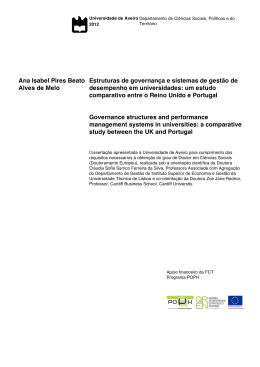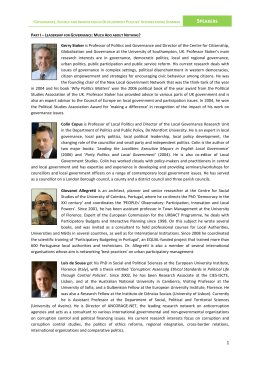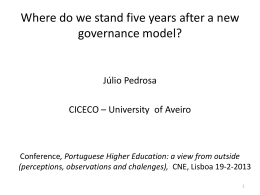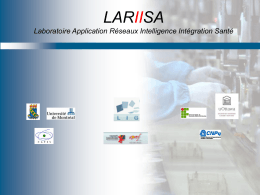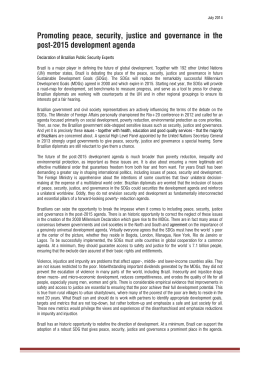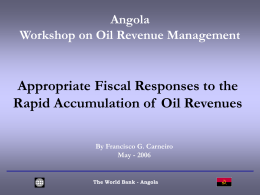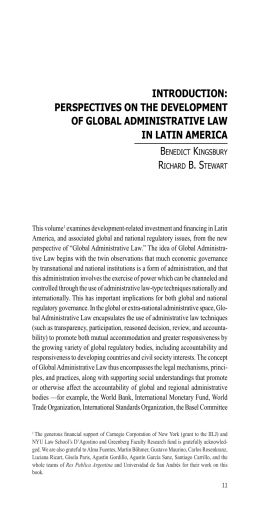Recebido em 10/10/2012, aprovado em 17/10/2013, disponível em 20/12/2013 Avaliado pelo sistema double blind review Editor científico: Elionor Farah Jreige Weffort ISSN: 1984-3925 The Influence of the Best Corporate Governance Practices on the Allocation of Value Added to Taxes. A Brazilian Case The Influence of the Best Corporate Governance Practices on the Allocation of Value Added to Taxes. A Brazilian Case Contabilidade, Gestão e Governança A Influência das Melhores Práticas de Governança Corporativa sobre a Destinação do Valor Adicionado a Tributos. Um Caso Brasileiro Vander Lima Fernandes1, Antonio Lopo Martinez2, Valcemiro Nossa3 Abstract This study investigates the relationship between tax payment and governance among firms listed on the São Paulo Stock Exchange (BM&FBovespa). To determine whether there is a correlation between corporate governance and payment of taxes, it is evaluated the allocation of the added value generated by the firms between 2005 and 2009, using a sample of companies ranked as among Brazil’s 500 largest public companies according to the magazine Exame Melhores e Maiores that also have Statements of Value Added (SVAs). The results indicate that firms listed for trading in special segments of the BM&FBovespa requiring higher governance levels allocate a lower percentage of their added value to pay taxes in comparison with other listed companies. This study can contribute to new research into the theme of corporate governance and taxation, such as to evaluate the relation between governance and taxation in specific economic sectors or whether or not firms with good governance are more likely to receive tax incentives. Overall, the results add insight into one way that governance can help improve firm performance and increase shareholder value. Keywords: Corporate governance, taxes, added value. Resumo Este estudo verifica a relação entre o pagamento de tributos e as práticas de governança corporativa nas empresas listadas junto a BM&FBOVESPA. Para averiguar se existe correlação entre governança corporativa e pagamento de tributos, foi avaliada a destinação do valor adicionado pelas empresas no período compreendido entre os anos de 2005 a 2009, utilizando-se como base da pesquisa as empresas presentes na relação das 500 maiores empresas listadas pela Revista Exame Melhores e Maiores, com DVAs (Demonstrações do Valor Adicionado). Os resultados indicam que empresas listadas nos segmentos especiais de governança corporativa na BM&FBOVESPA destinam um menor percentual do seu valor adicionado a título de tributos em comparação com as demais empresas. O estudo aqui apresentado almeja estimular novas pesquisas relacionadas aos temas de governança corporativa e tributação, tais como avaliar a relação entre governança e tributação em setores econômicos específicos ou se empresas com boa governança são mais propensas a receber incentivos fiscais. No geral, os resultados adicionam insights numa forma como a governança pode ajudar a melhorar o desempenho das empresas e aumentar o valor do acionista. Palavras-chave: Governança corporativa, tributos, valor adicionado. 1 Fucape Business School - Vitória, Espírito Santo, Brasil - [email protected] Fucape Business School - Vitória, Espírito Santo, Brasil - [email protected] 3 Fucape Business School - Vitória, Espírito Santo, Brasil - [email protected] 2 Contabilidade, Gestão e Governança - Brasília · v. 16 · n. 3 · p. 58 - 69 · set./dez. 2013 58 Vander Lima Fernandes, Antonio Lopo Martinez, Valcemiro Nossa 1 INTRODUCTION The interaction between taxation and corporate governance is an important topic of research (Schön, 2008). According to Hartnett (2008), corporate governance is a key element in improving efficiency and economic growth as well as increased investor confidence. In general terms the companies consider the payment of taxes as a cost to business and that by paying taxes higher than necessary would violate the duty of good governance to the investors of the company. In turn, tax authorities cannot yet be considered ready to regard companies that embrace corporate responsibility as being fully compliant with tax rules (Hartnett, 2008). Friese, Link and Mayer (2008) point out that tax system can influence corporate governance. When governments institute changes in tax systems, corporate governance systems can be affected. According to Owens (2008), corporate governance is only part of the economic context in which firms are embedded, and that the framework related to corporate governance regulations depends on the legal, tax and even the institutional environment. Hence there is a correlation between corporate governance and taxation. He further considers that an aggressive tax planning can create significant financial risks (adjustments and penalties). He defines aggressive tax planning as the use of unorthodox mechanisms that often run counter to the spirit of the law (Owens, 2008). Desai and Dharmapala (2008), in a study that sought correlations between corporate governance and taxation through a literature review of the subject, assert that corporate governance and taxation have been considered as antagonistic, notably because of the frequent use of tax havens by transnational companies considered to have good governance. They note that the basic intuition for how corporate governance and taxation interact is that tax avoidance demands complexity and obfuscation to prevent detection (Desai and Dharmapala, 2008). They evaluate the relationship between corporate governance and taxation in three aspects: a) characteristics of the tax system; b) nature of the corporate governance setting; and c) whether tax evasion necessarily only represents transfer of resources from the government to taxpayers. To add to the literature on the relationships between corporate governance and taxation, here it was assessed the allocation of the added value generated by Brazilian companies considered to have good corporate governance practices, focusing on the amounts directed to pay taxes, based on a sample of firms over the period from 2005 to 2009, as indicated in the firms’ statements of value added (SVAs). In this paper the main objective is trying to analyses whether variation in firms’ corporate governance mechanisms explains differences in their level of tax payment. We view tax planning as one of many investment opportunities that is available to managers. Similar to other investment decisions, managers have personal incentives to engage in a certain amount of tax planning that may not be in the best interest of shareholders, thereby giving rise to an agency problem. From the perspective of the firm’s shareholders, unresolved agency problems with respect to tax avoidance can manifest as either “too little” or “too much” tax avoidance. As with other agency problems, certain corporate governance mechanisms can mitigate agency problems with respect to tax avoidance. The choice of the theme was also based on the premise present in regulations on corporate governance practices, according to which the higher the level of governance adopted, the greater will be the information disclosed to the market. In this respect, Dalmácio and Rezende (2008) conclude that companies that have a higher level of corporate governance in some respect, accounting information has proved to be useful and timely, so as to influence their economic returns in some manner. This paper is groundbreaking because although there are many studies of corporate governance and the taxation of companies in Brazil, to the best of our knowledge this is the first to examine the relationship between these two aspects Few papers directly examine the link between corporate governance and taxation. Contabilidade, Gestão e Governança - Brasília · v. 16 · n. 3 · p. 58 - 69 · set./dez. 2013 59 The Influence of the Best Corporate Governance Practices on the Allocation of Value Added to Taxes. A Brazilian Case This research is relevant because it puts some light on the factors that influence managers’ tax planning decision. In this context, it is an important research question that has broad public policy implications, especially in Brazil, where relatively little is known about why some firms appear to be more tax aggressive than others. This study also contributes to the international literature, by present the relationship of governance to taxation at all levels, federal, state and municipal. By using SVA, we can identify the taxes collected by all entities, which makes this a more comprehensive research, when compared to those, that are usually performed internationally, which focus only on metrics that calculate the taxes on profits. The SVA available in Brazil offers such information that is not available for researcher internationally. The remainder of the paper consists of five sections. Section two develops our theoretical frameworks, that show the relation between corporate governance and taxation, and discusses how the relation may vary for different levels of tax avoidance. Section three describes our research method. Section four presents our primary empirical results and inferences. Section five provides concluding remarks. 2 THEORETICAL FRAMEWORKS 2.1 Corporate Governance Friese, Link and Mayer (2008) assert that the term corporate governance was first used more commonly in the North American legal literature of the 1970s. According to La Porta et al. (2000), corporate governance is, to a large extent, a set of mechanisms through which outside investors protect themselves against expropriation by the insiders. In turn, Hartnett (2008) affirms that, as stated previously, corporate governance is a key element in improving efficiency and economic growth as well as increased investor confidence. For Friese, Link and Mayer (2008), the corporate scandals involving companies like Enron and WorldCom in the United States raised awareness of the importance of good corporate governance as an element to control the conduct of managers better. For the Brazilian setting, Dalmácio (2009) states that corporate governance mechanisms seek to minimize conflicts and differences, functioning as instruments to correct failures in the process of communication and information disclosure. In turn, Ramos and Martinez (2006) define corporate governance as “the practices and relationships of all stakeholders, internal and external, for the purpose of valorizing the assets of companies, involving transparency, shareholder rights, fair treatment of all shareholders and accountability.” Dalmácio (2009) presents a model of Brazilian corporate governance, according to the three enhanced governance trading segments created by the BM&FBovespa: Level 1, Level 2 and New Market (Novo Mercado). 2.2 Studies of Corporate Governance and Taxation Sholes et al. (2008) confirm that the state although not an investor shareholding com panies, has a direct interest in the administration of the same, since they remain almost exclusively by the tax collection. Based on this condition, they assert that also important for the government is the maintenance of good corporate governance by companies. Freedman (2008), in an article examining the differences between the accounting rules used in the United States and Europe, confirms that a number of benefits are claimed for this so-called ‘book-tax conformity’, including reduced compliance costs and better oppor tunities for monitoring. This citation refers to the legal determinations imposed by oversight entities requiring firms always to demonstrate the controls used as well as the governance tools in use, to help the accurate determination of the results obtained, which means applying the tax rules as a control tool (Freedman, 2008). Desai and Dharmapala (2008), in a literature review on agency theory, corporate governance and taxation, assert that the tax Contabilidade, Gestão e Governança - Brasília · v. 16 · n. 3 · p. 58 - 69 · set./dez. 2013 60 Vander Lima Fernandes, Antonio Lopo Martinez, Valcemiro Nossa system can mitigate or amplify the corporate governance problems. But the inverse can also happen, where the nature of the corporate governance environment can influence the nature and consequences of the tax system. For many years the themes of taxation and corporate governance were considered antagonistic in the literature, but recent studies have concluded that they are related themes, since some corporate governance mechanisms have an important influence on firms’ taxation. On this matter, Desai and Dharmapala (2008) point out the impact of tax systems on corporate ownership patterns, and how ownership patterns in turn constrain corporate taxation. They also describe how tax systems are increasingly influencing corporate decisions. Wilson (2009), studying 51 American companies that had been penalized by the Internal Revenue Service for using tax shelters (through various offshore havens) and also had strong corporate governance tools, found that active tax shelter firms with strong corporate governance exhibit positive abnormal return performance while tax shelter firms with poor corporate governance exhibit significantly lower abnormal returns. In Brazil studies focused on corporate taxation have not yet correlated tax payment with corporate governance. Teixeira, Baptista and Fernandes (2010) examined the impact of the increase in the tax burden caused by the creation of a new non-cumulative method of levying the COFINS1 tax. The authors separately analyzed the effects on the sectors of the economy according to the classification by the BM&FBovespa and concluded that 7 of the 18 sectors suffered a negative tax impact on profits” (Teixeira, Baptista and Fernandes, 2010). The theoretical framework presented in the work of Teixeira, Baptista and Fernandes (2010) was noteworthy because of the dearth of studies on the tax burden on revenues, with researchers focusing more on the tax burden on consumption than on firms. Wasserman (2009) studies so-called implicit taxation, empirically investigating the influence of taxes on the price of assets. More specifically, he focuses on the advent of Provisional Measure2 281/2006, which exempted foreign investors from income tax on the yield on public bonds, concluding that the favorable taxation of foreigners established by this legislation led to a large increase in the influx of foreign capital in these papers. He further concludes that this wound up placing an implicit tax on these investments, since their return became smaller for foreign investors than for national investors. In other words, it caused Brazilian investors to incur a larger tax burden at the same time they were rewarded with higher returns, corroborating the implicit taxation argument (Wasserman, 2009). Bertolucci (2005) studies the cost of tax administration in Brazil. According to him neither researchers nor the tax authorities have a way of standardized measurement of the costs of administering the tax system. He particularly questions the need to merge the structures of the Federal Revenue Secretariat, the National Revenue Attorney’s Office and the Social Security Secretariat (which later wound up occurring in the case of the Revenue and Social Security Secretariats, thus uniting the management of revenues from taxes and pension contributions). Among his conclusions are that cost of tax administration is being increasingly shifted to taxpayers, in the guise of the constant 1COFINS is the acronym for “Contribution to Finance Social Security”. Contributions in Brazil are taxes whose revenue is earmarked for specific purposes instead of going into the general fund. This contribution (not to be confused with the social security contribution on payroll to finance the pension system) is assessed on gross revenue. The mentioned change requires larger companies to pay under a non-cumulative regime, through a system of offsetting debits and credits, but at a higher rate than applicable under the cumulative regime. While some firms benefited from this change (those able to use all the possible offsetting credits), the majority saw their tax bills increase. 2A provisional measure (medida provisória) is a presidential decree that takes immediate effect with status of ordinary law but is then subject to congressional approval/rejection/amendment. Contabilidade, Gestão e Governança - Brasília · v. 16 · n. 3 · p. 58 - 69 · set./dez. 2013 61 The Influence of the Best Corporate Governance Practices on the Allocation of Value Added to Taxes. A Brazilian Case creation of new reporting and record keeping obligations (Bertolucci, 2005). Calijuri (2009) presents some conside rations on tax management and planning of companies in the effort to maximize profits and thus raise firm value. He asserts that “in the current scenario, the minimization of taxes does not lead to maximization of firms’ profits, because it generates as a side effect other costs that were not taken into consideration.” The work demonstrates that companies need to take a holistic view of tax planning, by considering all the effects rather than just immediate lowering to the tax liability because of the high tax burden in Brazil (Calijuri, 2009). He further concludes that “tax management should be carried out in integrated form.” According to him, the best way for firms to maximize their value is to comply with tax rules and focus on their core business rather than just seeking to lower their taxes (Calijuri, 2009). Pohlmann and Iudícibus (2006) examine the classification of studies of the nature of taxation, which they divide into: (a) tax obedience; (b) public tax auditing and management; (c) impact of taxes on firms’ decisions; (d) optimal taxation and economic efficiency of taxation; and (f) legal research, subdivided into: (1) tax law; (2) tax accounting and auditing; and (3) tax planning. The studies mentioned reflect the strong interest in researching the effects of taxation on Brazilian companies and economic sectors, but so far there has been no consideration of the interplay of taxation and corporate governance in the country. This is the contribution of the present paper. 3 RESEARCH METHOD 3.1 Sample and Database This study is quantitative in nature, which according to Creswell (2007), “is characterized by testing or verifying data on performance and attitudes gathered from observations and surveys through statistical analysis.” The sample is drawn from companies ranked as among the 500 largest Brazilian public companies by the magazine Exame Melhores e Maiores (“Best and Biggest”) and that also had statements of value added in the FIPECAFI database over the study period from 2005 to 2009, irrespective of whether or not they were listed for trading in one of the three special segments of the BM&FBovespa reserved for firms with higher governance standards. The numerical figures analyzed are the total added value distributed and the added value paid as taxes. The sample consists of 741 observations, with the values being expressed in Reais (R$, without adjustment for inflation, since my focus is on the percentage of the total added value paid as taxes. Most of the firms have observations for all the years in the database, since they were drawn from the country’s largest firms. The segregation by sector of activity and the data on total assets and revenue are taken from the Economática® database. After gathering the data on the overall amount and allocation of added value for payment of taxes, I calculated the percentage of taxes in the total as follows: C= AVtotal x100 AVtax Where: C is the percentage of total added vale paid as taxes; AVtax is the added value allocated to pay taxes; and AVtotal is the total added value. 3.2 Research Hypothesis and Model Estimated Although previous international literature provides some insight into the role of corporate governance on taxation, inferences are still limited regarding whether (and how) corporate governance influences firms’ taxation. In this context in this paper we try to provide some insights of how corporate governance is related to taxation in Brazil. Contabilidade, Gestão e Governança - Brasília · v. 16 · n. 3 · p. 58 - 69 · set./dez. 2013 62 Vander Lima Fernandes, Antonio Lopo Martinez, Valcemiro Nossa If shareholders and managers have different preferences for tax planning then governance mechanisms may be structured to influence managers’ tax avoidance decisions. For example, certain governance mechanisms may prevent (or mitigate) over- and underinvestment in tax planning. Although firms typically utilize a variety of governance mechanisms, we focus on those that we believe are most likely directly associated with tax decisions. Specifically, we focus on the financial sophistication and independence of the board, signalized by been in the corporate governance special listing segment of BMF&Bovespa. We expect that more financially sophisticated boards will better understand and monitor managers’ tax avoidance decisions. Accordingly, we predict a positive relation between corporate governance special listing segment and tax avoidance In line with the objectives of this study explained in the second section, the following is the null hypothesis tested: H0 – companies with good governance practices are not subject to greater allocation of their added value to pay taxes. If this hypothesis is not sustained, then the following alternative hypothesis can be assumed to hold: H1 – companies with good governance practices are subject to greater allocation of their added value to pay taxes. As mentioned previously, the null hypothesis, H0, represents the status quo, or “what is believed at the moment for a determined situation” (Levine et al., 2008) based on the previous evidence. Starting from this assertion and considering there is currently no evidence that well-governed firms pay higher taxes, the present section presents the framework that allows assessing the validity of the above research hypothesis. I therefore test whether the percentage of the total added value paid as taxes by the sample firms is different due to having enhanced corporate governance practices in comparison with firms that do not have such practices. Obviously the amount of the added value paid as taxes is a function of the firm size. But the measurement of firm size is outside the scope of this work, so to remove this factor that can influence the variable of interest; I use as a control variable a measure of the gross revenues. The equation below specifies the function estimated, from which it is possible to draw inferences on the working hypothesis: C= b o + b1CG + b 2 log(Re v) + ε Where: C is the percentage of the total added value paid as taxes. CG is a dummy for corporate governance (1 if the firm has some level of enhanced governance, and 0 if not). log(Rev) is the control variable, namely total gross revenue (used in the regression as the logarithm of revenue rather than in level). is the idiosyncratic error term, which is assumed to have mean zero and constant variance among the firms analyzed. It is expected that the estimation of the model specified above will allow either rejecting the null hypothesis or not, so as to respond to the question of whether companies with some level of enhanced governance in Brazil pay more taxes out of their added value than do firms that do not have any special governance practices. 3.3 Descriptive Analysis The database consists of 741 observations among firms ranked as among Brazil’s 500 largest public companies and that disclosed statements of value added in the FIPECAFI database, in the period from 2005 to 2009. According to Table 1, 2008 was the year when the largest number of firms released a statement Contabilidade, Gestão e Governança - Brasília · v. 16 · n. 3 · p. 58 - 69 · set./dez. 2013 63 The Influence of the Best Corporate Governance Practices on the Allocation of Value Added to Taxes. A Brazilian Case of value added (SVA). Nevertheless, there are no great differences in this respect among the years. The reason for the greater presence of these statements in 2008 was the enactment of Law 11,638/2008, requiring listed companies to publish this statement. Table 1 - Frequency of companies per year, Brasil, 2005-2009. 2005 2006 2007 2008 2009 Total Year of data collection Frequency Percentage 135 18.2 135 18.2 150 20.2 166 22.4 155 20.9 741 100.0 Table 2 presents the frequency of the economic sectors according to the classification in the Economática database. The sector in which the most statements of value added were disclosed in the study period (2005-2009) was electricity, with just over 20%. The explanation is that publication of this statement was made mandatory in 2001 by the sector’s regulator, the National Electric Energy Agency, through ANEEL Resolution 444, containing the Electric Sector Accounting Manual. Table 3 presents the frequency of firms classified as having enhanced governance, that is, that were listed for trading during the study period in one of the three special trading segments of the BM&FBovespa, versus those not having any special governance practices. It can be seen that the latter group accounts for 64.5% of the total. This does not mean the firms not listed for trading in one of these three special segments do not use certain good governance practices. Nevertheless, adherence to one of these segments can be considered a fairly reliable proxy for better than normal corporate governance. Table 3 - Frequency of companies sorted by governance. Table 2 - Frequency of Sectors. Classified in Sectors by Economática Frequency Percentage Agricultural and 2 0.3 fisheries Food and beverage 51 6.9 Retailing 50 6.7 Construction 13 1.8 Electronics 18 2.4 Electricity 148 20.0 Finance and 3 .4 insurance Industrial machinery 13 1.8 Mining 7 .9 Non-metallic 15 2.0 minerals Others 92 12.4 Pulp and paper 20 2.7 Oil and gas 25 3.4 Chemicals 53 7.2 Steel and other 70 9.4 metals Software and data 15 2.0 Telecommunications 28 3.8 Textiles 63 8.5 Transportation 18 2.4 service Vehicles and parts 37 5.0 Total 741 100.0 Frequency No special governance Special governance Total Percentage 478 64.5 263 35.5 741 100.0 Table 4 shows the relative frequencies of following or not following special governance practices broken down by year. In all years the percentage of firms without special governance practices is in the majority. However, from the start to the end of the study period the percentage of firms with higher corporate governance levels increased. In 2006, the number of firms with enhanced governance practices increased 19.4% in comparison with 2005. In 2007, the increase was even greater, at 37%, while there was a slight dip in 2008 of 1.7%, followed by a new increase in 2009 of 15.5%. Over the entire study period, the percentage increase of firms with some level of enhance governance was 86.1%. Besides the descriptive statistics of the categorical variables already presented (presence of enhanced Contabilidade, Gestão e Governança - Brasília · v. 16 · n. 3 · p. 58 - 69 · set./dez. 2013 64 Vander Lima Fernandes, Antonio Lopo Martinez, Valcemiro Nossa corporate governance, sector of activity), Table 5 shows the results for total revenue and percentage of tax. Table 4 - Frequency of governance for years, Brasil, 2005-2009. Frequency Percentage 99 73.3 36 26.7 135 100.0 92 68.1 43 31.9 135 100.0 91 60.7 59 39.3 150 100.0 108 65.1 58 34.9 166 100.0 88 56.8 67 43.2 155 100.0 % of total added vale paid as taxes Year of data collection No Special governance 2005 Special governance Total No special governance 2006 Special governance Total No special governance 2007 Special governance Total No special governance 2008 Special governance Total No special 2009 governance Special governance Total seen in Table 6 below. Nevertheless, the test to compare the means indicates a significant difference, meaning the percentage allocated to taxes of the group with special governance is statistically different from the figure for the group without special governance practices. Without With Figure 1 - Boxplot of the percentage of taxes of the groups with and without enhanced corporate governance. It can be seen in Figure 1 that the mean percentages of allocation to taxes of the groups with and without enhanced corporate governance are near, a result that can also be However, just a simple test of the difference of the means does not permit the inference that the difference in the allocation of added value to taxes occurs because of better corporate governance practices by a group of firms. The next section presents the results estimated for the proposed model. Table 5 - Descriptive statistics of the percentage of taxes and total gross revenue. N Valid Missing % of tax in total Gross revenue 741 0 607 134 Mean 36.54 Median 34.85 Standard deviation 32.53 5936790.30 1530613.00 21209835.65 Minimum -192.82 Maximum 383.56 1707.00 266494080.00 Contabilidade, Gestão e Governança - Brasília · v. 16 · n. 3 · p. 58 - 69 · set./dez. 2013 65 The Influence of the Best Corporate Governance Practices on the Allocation of Value Added to Taxes. A Brazilian Case Table 6 - Characterization of the allocation to taxes for the groups with and without enhanced corporate governance. Enhanced governance No Yes N Mean Median 478 263 40.600 29.159 39.778 28.691 Standard deviation 33.996 28.285 Min Max -192.822 -161.585 383.556 224.233 Percentiles 25 25.935 16.861 50 39.778 28.691 75 57.099 40.892 4 RESULTS This section investigates the correlation between the allocation of added value to taxes and the use of enhanced corporate governance practices. Besides the inclusion of a dummy variable that captures the adoption or not of enhanced governance, the model includes a control variable – the logarithm of total revenue. The first test is the F-test, which seeks to verify if the regression is valid as a whole. It is a joint test of the model’s coefficients. In this case, the test involves the following hypothesis: H0: b1=b2=0 With the proposed regression model, according to the F-test the model as a whole is significant at 0.05. Table 7 - Analysis of variance of the linear regression model. Model Regression Residual Total ANOVAb Sum of the Mean DF squares squares 24999 2 12499 512521 604 848 537521 606 F Sig. 14.73 0.000a Assuming the validity of the model, Table 8 presents the results: Table 8 - Coefficients of the fitted linear regression model. Model (Constant) Corp.Gover. Log revenue Coefficients 5.32 -11.67 2.52 Standard error 10.63 2.45 0.75 t Sig. 0.50 -4.75 3.35 0.617 0.000 0.001 Since the response variable estimated is a percentage, the results indicate that the adoption of enhanced corporate governance practices reduced the percentage share of the added value allocated to pay taxes by an average of 11.67% for the sample of Brazilian public companies during the study interval. Besides this, the equation is log-linear for revenue, indicating that a variation of 1% in this variable leads to an increase of 2.52% in the amount allocated to pay taxes. Both variables are significant at 5%. Although not documented in the tables, to assure the robustness of the statistics we performed additional tests, among them: (i) Jarque-Bera (JB) normality test, which indicated the residuals had normal distribution; (ii) variance inflation factor (VIF) test, which presented high values, but lower than the limits that would have indicated a serious problem of multicollinearity; and (iii) Breusch-Godfrey (BG) test, which indicated no autocorrelation of the residuals. 5 CONCLUSION As reflected in the previous studies summarized, the adherence of firms to various enhanced corporate governance mechanisms is currently believed to be of great importance, notably to minimize agency conflicts. In the international literature there has been a fair amount of interest in correlating governance levels together with taxation, as shown by Desai and Dharmapala (2008) and Hartnett (2008), among others. However, little is still known about this correlation, particularly when crunching the numbers. The aim of this work was to verify the relationship between the allocation of the added Contabilidade, Gestão e Governança - Brasília · v. 16 · n. 3 · p. 58 - 69 · set./dez. 2013 66 Vander Lima Fernandes, Antonio Lopo Martinez, Valcemiro Nossa value for payment of taxes and the use of enhanced corporate governance mechanisms by Brazilian firms with shares traded in the BM&FBovespa and ranked as being among the 500 largest public companies in the country by the magazine Exame Melhores e Maiores. This was done by using a regression model containing as explanatory variables adherence or not to one of the levels of enhanced corporate governance of the BM&FBovespa and total revenue. This paper is unique in examining the relation of Corporate Governance and Taxation by using data from SVA (Statement of Value Added). Our results shed light into how governance may impact taxation in general, and not only in Income taxes. According to the results found, there is a negative relation between the use of enhanced corporate governance mechanisms and the amount of added value allocated to pay taxes in Brazil. In other words, companies listed in one of the trading segments requiring higher corporate governance practices on average allocate a lower percentage of their added value to pay taxes. This confirms the hypothesis that firms with better corporate governance are not subject to a higher tax burden, as measured by the allocation of added value. One of the limitations of this study is the size of the sample, consisting of 741 observations, which represents a small number of firms listed in the BM&FBovespa that also disclose a statement of value added (SVA). With the advent of mandatory SVA disclosure, future studies will be able to draw on a larger number of observations, which will certainly allow more reliable inferences. Another limitation of this study is the lack of previous works on this theme in the Brazilian setting, leading to the proposal of a simple regression model that apparently did not have a strong capacity to explain the results. As found in the international studies cited at the start, the results suggest there is a correlation between taxation and corporate governance, even after controlling for firm size. However, as mentioned, other variables that remain in the error term of the model estimated here can to some extent have polluted the results, a problem that can be addressed by expanding the model to provide a more “refined” correlation of the variables. This study can serve as a starting point for future research on the relationship of corporate governance and taxation, including studies focused on specific sectors or whether or not companies following better governance practices are more likely to be favored with tax incentives. Another worthy effort would be to improve the model proposed here, by adding other variables that can bring more explanatory power to the question of the effect of having higher governance standards on firms’ tax burden. Overall, the results add insight into one way that governance can help improve firm performance and increase shareholder value, an issue of particular relevance given the trend in Brazil toward higher governance standards and the country’s extremely high tax burden in relation to other countries. REFERENCES BERTOLUCCI, Aldo Vincenzo. O custo de administração dos tributos federais no Brasil: comparações internacionais e propostas para aperfeiçoamento. 2005. 110 f. Tese (Doutorado em Contabilidade). Faculdade de Economia, Administração e Contabilidade, Universidade de São Paulo, São Paulo, 2005. CALIJURI, Mônica Sionara Schpallir. Avaliação da gestão tributária a partir de uma perspectiva multidisciplinar. 2009. 248 p. Doctoral Thesis in Accounting. Faculdade de Economia, Administração e Contabilidade, Universidade de São Paulo, São Paulo, 2009. CRESWELL, J. W. Projeto de pesquisa: método qualitativo, quantitativo e misto. Porto Alegre: Artmed, 2007, 2nd ed. DALMÁCIO, Flávia Zóboli. Mecanismos de governança e acurácia das previsões dos analistas de mercado brasileiro: uma análise sob a perspectiva da teoria da sinalização. 2009. 232 p. Doctoral Contabilidade, Gestão e Governança - Brasília · v. 16 · n. 3 · p. 58 - 69 · set./dez. 2013 67 The Influence of the Best Corporate Governance Practices on the Allocation of Value Added to Taxes. A Brazilian Case Thesis in Accounting. Faculdade de Economia, Administração e Contabilidade, Universidade de São Paulo, São Paulo, 2009. DALMÁCIO, Flávia Zóboli; REZENDE, Amaury José. A Relação entre o timeliness e a utilidade da informação contábil e os mecanismos de governança corporativa: evidências no mercado acionário brasileiro. Revista de Administração e Contabilidade da Unisinos (BASE), São Leopoldo, v. 5, n. 3, pp. 163-174, Sept.-Dec. 2008. DESAI, Mihir, DHARMAPALA, Dhammika. Taxation and corporate governance: An economic approach. In: SCHÖN, Wolfgang, MPI Studies on Intellectual Property, Competition and Tax Law, Tax and Corporate Governance, Springer, Munich, pp. 13-30, 2008, presented In: Conference on Taxation and Corporate Governance at the Max Planck Institute in Munich, December 4-5, 2006. FREEDMAN, Judith. Financial and tax accounting: Transparency and “truth”. In: SCHÖN, Wolfgang, MPI Studies on Intellectual Property, Competition and Tax Law, Tax and Corporate Governance, Springer, Munich, p. 71, 2008, presented In: Conference on Taxation and Corporate Governance at the Max Planck Institute in Munich, December 4-5, 2006. FRIESE, Arne, LINK, Simon and MAYER, Stefan. Taxation and corporate governance – The state of the art. In: SCHÖN, Wolfgang, MPI Studies on Intellectual Property, Competition and Tax Law, Tax and Corporate Governance, Springer, Munich, p. 357-425, 2008, presented In: Conference on Taxation and Corporate Governance at the Max Planck Institute in Munich, December 4-5, 2006. HARTNETT, Dave. The link between taxation and corporate governance. In: SCHÖN, Wolfgang, MPI Studies on Intellectual Property, Competition and Tax Law, Tax and Corporate Governance, Springer, Munich, p. 3-8, 2008, presented In: Conference on Taxation and Corporate Governance at the Max Planck Institute in Munich, December 4-5, 2006. LA PORTA, Rafael, LOPEZ-DE-SILANES, Florêncio, SHLEIFER, Andre, VISHNY, Robert. Investor Protection and corporate governance. Journal of Financial Economics, 2000, 58: 3-27 LEVINE, D. M., STEPHAN, D. F., KREHBIEL, T. C., BERENSON, M. L., Estatística – teorias e aplicações. Translated by Teresa Cristina Padilha de Souza. Rio de Janeiro: LTC, 2008. 5th ed. OWENS, Jeffrey P. Good corporate governance: The tax dimension. In: SCHÖN, Wolfgang, MPI Studies on Intellectual Property, Competition and Tax Law, Tax and Corporate Governance, Springer, Munich, p. 9-12, 2008, presented In: Conference on Taxation and Corporate Governance at the Max Planck Institute in Munich, December 4-5, 2006. POHLMANN, Marcelo Coletto; IUDÍCIBUS, Sérgio de. Classificação da pesquisa tributária: uma abordagem interdisiplinar. Enfoque Reflexão Contábil, São Paulo, v. 25, n. 03, pp. 57-71, Sept.Dec. 2006. RAMOS, Gizele Martins; MARTINEZ, Antônio Lopo. Governança corporativa. Revista Contem porânea em Contabilidade, Florianópolis, v. 1, n. 6, pp. 143-164, July-Dec. 2006. SHOLES, M. WOLFSON, M., ERICSON, M., MAYDEW, E. SHEVLIN, T. Taxes and Business Strategy: a Planning Approach. Prentice Hall, 2008, Fourth Edition, p. 3 SCHÖN, Wolfgang, MPI Studies on Intellectual Property, Competition and Tax Law, Tax and Corporate Governance. Munich: Springer, 2008, presented In: Conference on Taxation and Corporate Governance at the Max Planck Institute in Munich, December 4-5, 2006. TEIXEIRA, Arilton Carlos Campanharo; BAPTISTA, Ézio C. S.; FERNANDES, Fernando Alberto Dutra. COFINS: um estudo empírico dos efeitos da alteração de incidência sobre o lucro de empresas com ações negociadas na Bovespa e seu impacto na arrecadação tributária federal. RBGN – Revista Brasileira de Gestão de Contabilidade, Gestão e Governança - Brasília · v. 16 · n. 3 · p. 58 - 69 · set./dez. 2013 68 Vander Lima Fernandes, Antonio Lopo Martinez, Valcemiro Nossa Negócios, São Paulo, v. 12, n. 35, pp. 171-190, April-June 2010. Administração e Contabilidade, Universidade de São Paulo, São Paulo, 2009. WASSERMAN, Cláudio. Tributação implícita: redução do retorno pré-imposto em ativos favoravelmente tributados. 2009. 108 p. Doctoral Thesis in Accounting. Faculdade de Economia, WILSON, Ryan J. An examination of corporate tax shelter participants. The Accounting Review, v. 84, n. 3, pp. 969-999, 2009. Contabilidade, Gestão e Governança - Brasília · v. 16 · n. 3 · p. 58 - 69 · set./dez. 2013 69
Download
